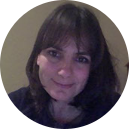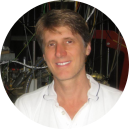Prof. J. W. G. Tisch
Imperial College London
John Tisch is a Professor of Laser Physics at the Blackett Laboratory, Imperial College London. His research interests are ultrafast laser physics and high-intensity laser-matter interactions, especially the generation and application of high-power femtosecond laser pulses to generate coherent x-ray pulses of attosecond (10-18 sec) duration and the use of attosecond pulses to study ultrafast dynamics in matter.
Tisch has carried out seminal experimental studies of the temporal, spatial and coherence properties of high harmonic radiation that has advanced the use of this unique short-wavelength light source in scientific and technological applications and helped elucidate the fundamental process of high harmonic generation in atoms, molecules and clusters. Tisch also conducted the first measurements of high energy electron and ion production through the interaction of intense laser pulses with large atomic-clusters.
Since 2003, he has played a leading role in the development of Attosecond Science in the United Kingdom. Some highlights of Tisch's research include the fastest ever measurement of structural rearrangement in a molecule, the first measurements of attosecond "half-cycle cutoffs", now widely used to extract ultrafast electronic and molecular dynamics, new insights in the role of coherence in photosynthesis, and the first attosecond-resolution measurement of photoemission from semiconductor and gold surfaces that paves the way for the study of attosecond dynamics in semiconductors and nanoplasmonic structures.
Tisch gained his undergraduate degree in Physics from the University of Tasmania and his PhD in Physics from Imperial College London. After an EPSRC Advanced Fellowship and a period working at the ETH Zurich, Tisch gained a lectureship position at Imperial College in 2003 and was promoted to professor in 2009. He serves on a number of international conference committees, including CLEO and Atto and was the General Chair for the Ultrafast Optics conference. He is a Founding Chair of the international conference series Ultrafast Dynamical Imaging of Matter. He is a member of the international Scientific Advisory Committee for ELI-ALPS, the attosecond pillar of the Extreme Light Infrastructure European project. He is a Fellow of the Institute of Physics and the Optical Society of America.


